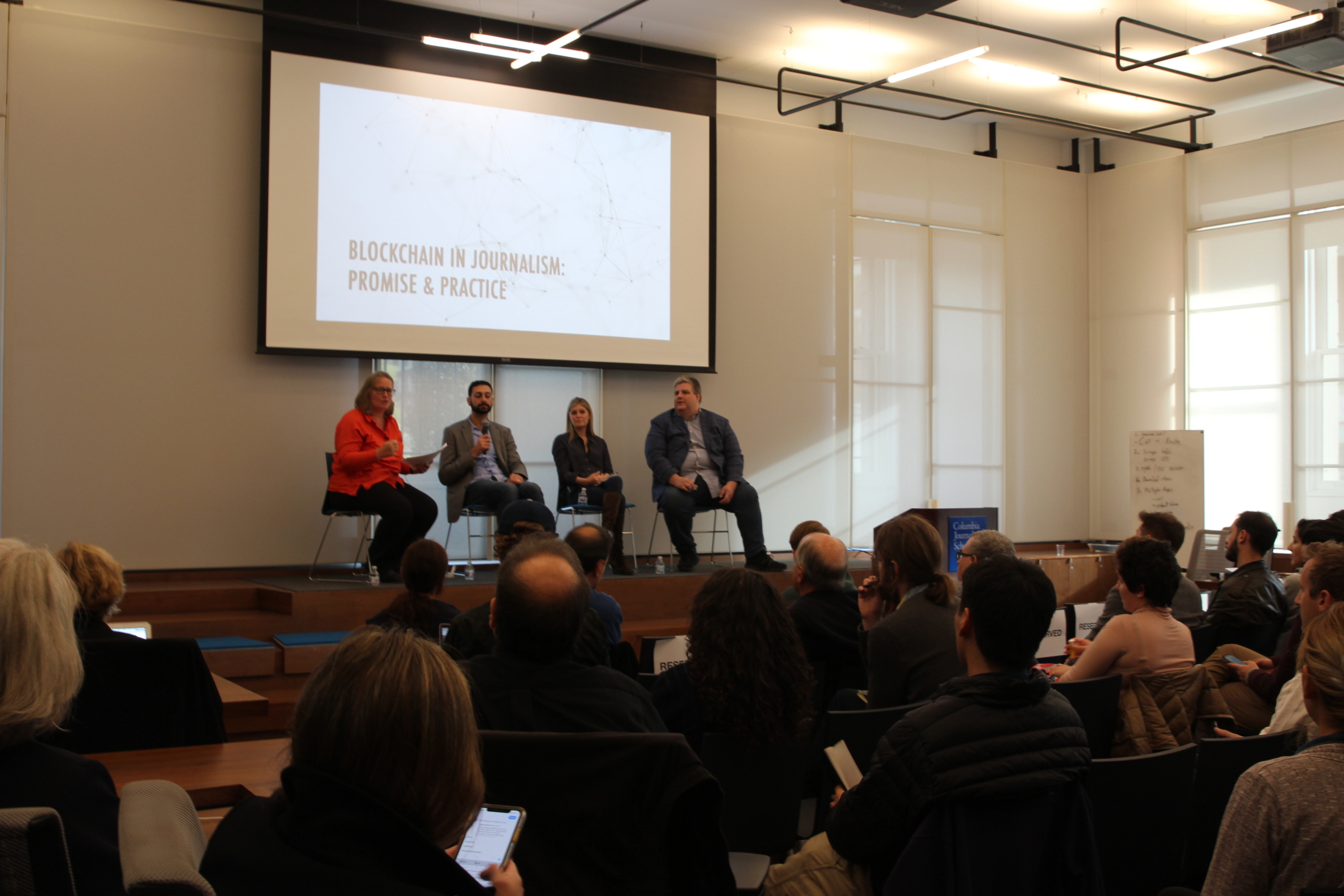Sign up for the daily CJR newsletter.
The technology that powers cryptocurrency, called blockchain, has captured the attention of newsrooms in dire need of better business models, even as societies debate the value of currencies like Bitcoin and Ethereum. Last week, a group of technologists, journalists, legal experts, and academics gathered at the Brown Institute and the Tow Center for Digital Journalism for a series of discussions about what blockchain’s uses in journalism have taught us about this trendy new technology, and what it may hold for the media industry of the future.
Many in the industry see blockchain’s unusual properties—decentralization, instant verification and resistance to modification of data— as a set of potential solutions to the media’s woes, and some have even launched blockchain-based journalistic endeavors to put theories to test. Such early experiments—others beyond Civil include AdChain and Po.et—have been met with varying degrees of success; they also revealed new problems and concerns.
READ: Pressure increases on Bloomberg to verify its China hack story
The panelists included Vivian Schiller, CEO of the Civil Foundation, a blockchain-based media start-up, and Manoush Zomorodi, host of the ZigZag podcast. (Disclosure: Emily Bell, the Tow Center’s founding director, sits on the Civil Foundation’s governing council.) Civil functions as a platform supporting many news publications, ZigZag among them, financed by its own token the CVL, and was a major topic of discussion as well as a panelist.
Other practitioners on the day’s panels were Salah Zalatimo, head of Product & Tech team at Forbes Media, which recently started to publish on Civil, Mike Goldin, founder of AdChain, a register where users vote entries up or down with digital tokens, and Jarrod Dicker, CEO of Po.et, a token-based publishing platform. Also in the discussion were industry observers, critics and academic researchers such as Nellie Bowles of The New York Times, Eran Tromer of Columbia University, Paul Ford of Postlight, and media and IP law expert Alexia Bedat of Klaris Law.
The news industry faces two “buckets of crises” today—declining public trust and financial sustainability—, and blockchain can help address both of them, said Vivian Schiller. Many of blockchain’s properties—openness, decentralization, and the difficulty of modifying existing data—are foundational to a healthy media environment.
In theory, a network of public, cryptographically signed, identical “blocks” of data would allow journalists to authenticate content, to promote premium content, to give users ownership of data that might be used to show them advertising, and to responsibly publish and unpublish. This enticing prospect attracts both young journalists and seasoned media practitioners to various blockchain-based media initiatives. In practice, three main challenges have emerged, the panelists agreed:
ICYMI: The clause freelance writers should fight to remove from their contracts
- First, blockchain technology carries a stigma for being closely associated with the volatile value and reputation of cryptocurrencies such as Bitcoin. “People hear blockchain, they think get-rich-quick schemes,” said Schiller. The fact that tokens may become targets of speculation exacerbates this problem.
- Second, it remains difficult to communicate the basic facts about this abstract technology to a wider audience and convince them that it is germane to their daily lives. Panelist Manoush Zomorodi, host of the podcast ZigZag (one of the newsrooms that run on Civil), created the podcast to contribute to this effort. Zomorodi said all blockchain-based journalists must think like entrepreneurs. “As a journalist, you can’t work and go home anymore,” she said.
- The last challenge is that many products and product launches are flawed due to poor product design. Unnecessary complications in any system can lead to low participation rate: Civil failed to meet its pre-set target of $8 million earlier that week. Nieman Lab’s John Keefe calculated that it takes 44 steps to purchase CVC, the token that powers Civil. Mike Goldin, founder of AdChain, a blockchain-based advertising protocol, said that early experiments have taught him that early buyers of cryptographic tokens often prove to be speculators. He suggested an alternative to an “initial coin offering” or ICO: “It’s better to identify who are the valuable members of the community and give them tokens for free,” said Goldin.
While the panelists were generally optimistic about blockchain’s potential to improve public trust in journalism, they also wondered whether the journalism industry had too hopeful a view of the blockchain-based future. Paul Ford, CEO of media software developer Postlight, who has written extensively on blockchain, compared it to the early days of the internet: “The whole thing is a giant under-construction GIF,” he said.
Panelists and audience members also raised concerns specific to blockchain, such as security threats enabled by even more advanced tools including quantum computing, though Ford suggested that “something else will get us before quantum computing does.” There are also new inequalities that may arise as result of uneven distribution of tokens—a problem exacerbated by speculation, and one that Civil has tried to address in its distribution scheme. Ultimately, the panel said, the fate of blockchain journalism may hang on on whether the community of journalists keeps asking the hard questions about how to ensure that blockchain-based journalism serves and informs the public—and that control of the technology doesn’t fall into hands of the few.
Has America ever needed a media defender more than now? Help us by joining CJR today.









